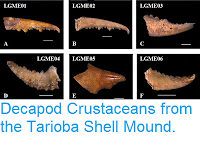From the end of the fifteenth century onwards the conquest of the Americas by European powers was accompanied by a series of major epidemics which caused declines in indigenous populations of up to 95% and which often reached areas ahead of the Europeans themselves. Old World diseases such as Smallpox, Measles, Mumps, and Influenza have been recorded as causing such outbreaks among Native Americans in the eighteenth and nineteenth centuries, but the causes of earlier epidemics are less clear; modern ideas on disease were yet to develop, making diagnosis of disease in the way we think of it impossible, and the recording of symptoms highly subjective (even assuming that disease-causing micro-organisms have not evolved in ways that have caused their symptoms to change). Some success has been made in diagnosing diseases from archaeological sites where pathogens induce symptoms that cause pathological modification of the skeleton (such as Syphilis or Leprosy), but most infections cause no such damage, with many fatal diseases attacking soft tissues to rapidly for the skeleton to be affected before death.
In a paper published on the bioRxiv prepring database on 8 February 2017, Åshild Vågene of the Max Planck Institute for the Science of Human History, Michael Campana of the Department of Human Evolutionary Biology at Harvard University and the Institute of Evolutionary Medicine at the University of Zurich, Nelly Robles García of the Teposcolula-Yucundaa Archaeological Project of the National Institute of Anthropology and History in Mexico, Christina Warinner, Maria Spyrou, and Aida Andrades Valtueña, also of the Max Planck Institute for the Science of Human History, Daniel Huson of the Center for Bioinformatics at the University of Tübingen, Noreen Tuross, also of the Department of Human Evolutionary Biology at Harvard University, and Alexander Herbig, Kirsten Bos and Johannes Krause, also of the Max Planck Institute for the Science of Human History, describe the results of a palaeopathological study of remains from the middle sixteenth century Grand Plaza and Churchyard cemeterie at Teposcolula-Yucundaa in Oaxaca State Mexico.
Vågene et al. used a genetic pathogen-screening program that was able to test samples for genetic traces of a wide range of disease-causing organisms. Many previous studies have found genetic material from pathogens in archaeological remains, but earlier techniques were only able to screen for a small number of organisms, with the effect that such studies could only be carried out where skeletal modification or historical records gave scientists a rough idea what they were looking for.
The Teposcolula-Yucundaa cemeteries was used between 1545 and 1550, by a highland Mixtec population that were being struck down by a disease recorded by the Spanish as ‘Pujamiento de Sangre’, or ‘full bloodiness’ and the Aztecs as ‘Cocoliztli’ or ‘pestilence’. The bodies were buried in multiple occupancy graves which were subsequently covered over by stone slabs; the site was abandoned shortly after the epidemic, reducing the chance of subsequent contamination of the remains.
Overview of Teposcolula-Yucundaa. (A) Illustrates the location of the Teposcolula-Yucundaa site in the Mixteca Alta region of Oaxaca, Mexico; (B) central administrative area of Teposcolula-Yucundaa showing the relative positioning of the Grand Plaza and churchyard cemetery sites. Burials within each cemetery are indicated with dark grey outlines and the excavation area is shaded in grey; (C) drawing of individual grave. Vågene et al. (2017).
A variety of causes have previously been suggested for the Cocoliztli epidemic of 1545-50, including Typhus or Typhoid Fever, Measles, and Bubonic Plague. Enteric Fever, a condition associated today with food poisoning, is a less obvious candidate, but the infection pattern associated with the Bacterium does make it a plausible cause of the epidemic. Infection results in severe diarrhea, with infection spreading through food or water that encounters the faeces of sufferers. Victims remain infectious after symptoms have cleared, and a small proportion become carriers, remaining infectious for long periods without showing any symptoms. Such carriers could potentially cross the Atlantic on ships without the disease being detected, thereby reaching Native American communities that had not previously encountered the disease.
Vågene et al. extracted material from the tooth pulp-cavities of 24 skeletons from Grand Plaza and five from the Churchyard Cemetery. This was then screened for DNA from a variety of Human oral and soil microbiota. Three of these tested positive for the Bacterium Salmonella enterica, a major cause of Enteric Fever.
Communities in Mexico (and other areas under Spanish rule) would have been particularly vulnerable to this, due to the policy of congregación, under which Native populations were forcibly resettled in new communities, making them easier to control. This policy was often associated with rapid declines in population (as much as 90% in some areas), as people were moved into much closer proximity to one another at the same time as they were introduced to new diseases. Enteric Fever would be particularly dangerous under such circumstances, as forced relocation would lead to the breakdown of traditional hygiene arrangements, without necessarily implementing any suitable replacement.
See also...
Follow Sciency Thoughts on Facebook.







